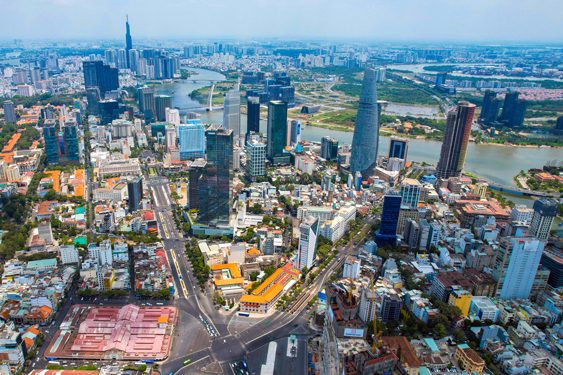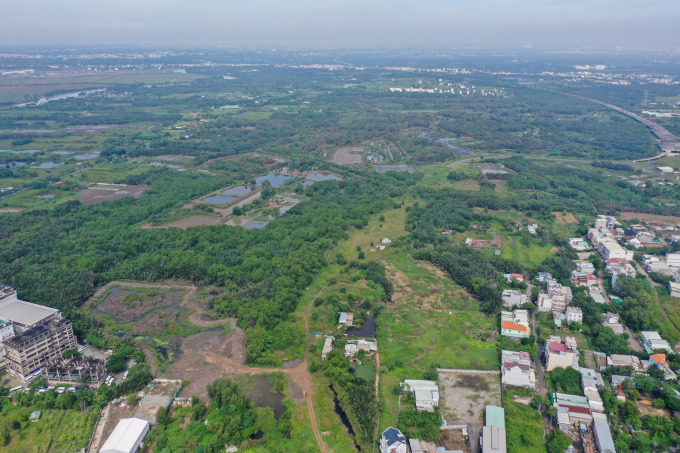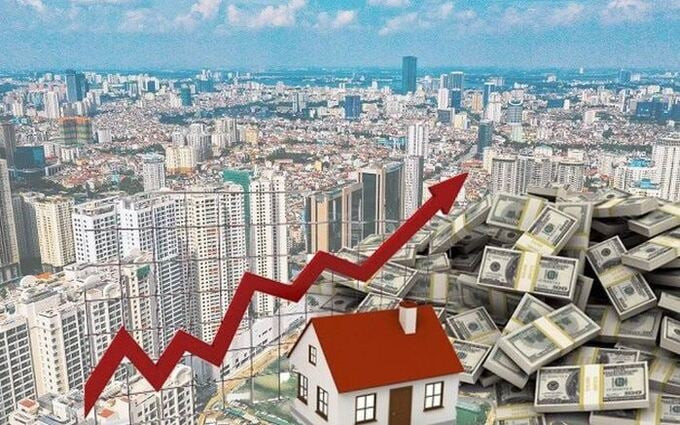Ho Chi Minh City aims for global urban model
According to the adjusted master plan, Ho Chi Minh City will be a civilized, modern, and humane city; develop on par with major cities in the world; become an economic, financial, and service center of Asia…
The Ho Chi Minh City People’s Committee has just submitted a document to the Ministry of Construction on the Project to adjust the general planning of Ho Chi Minh City to 2040, with a vision to 2060, for appraisal and submission to the Prime Minister for approval.
Confluence of Powers
According to the report, the planning boundary is the entire administrative boundary of Ho Chi Minh City with a total area of about 2,123 km2; including the entire area within the existing administrative boundary of more than 2,095 km2 and the related Can Gio sea area. Regarding the planning period, the first phase is until 2030, the long term is until 2040 and the vision is until 2060.

Ho Chi Minh City is planned to be a global, civilized, modern, and humane city, developing on par with major cities in the world, becoming the economic, financial, and service center of Asia. Ho Chi Minh City is also a place with unique cultural development, people with high quality of life; the nucleus of the Southeast region, the growth pole of the whole country.
In the project, Ho Chi Minh City orients the overall development of space towards the confluence of forces. Firstly, the confluence of natural forces, sustainable development and adaptation. The city takes ecological landscape as the center, promoting the power of nature as the foundation for development.
Second, the convergence of talent and resources. Along with creating a bustling and unique metropolis, an attractive destination and living environment, Ho Chi Minh City provides living and working space for highly skilled workers and entrepreneurs; organizes many modern production and business centers, connected to the regional transportation system and international gateways.
With the content of converging the economic strength of the whole region, Ho Chi Minh City becomes an international trade and creative economic center, flexibly welcoming all opportunities. Along with that, arranging and directly connecting Ho Chi Minh City’s production and business areas to strategic international logistics locations; closely connecting with the global supply chain; at the same time restructuring the industrial land fund in the inner city to welcome all opportunities to transform the economy to higher value…
Multi-center with 5 metropolitan areas
According to the report, Ho Chi Minh City develops according to a multi-center urban model associated with diverse ecological spaces, including a central urban area and 4 urban areas: East, West, South, North. Ho Chi Minh City converges and spreads the development momentum by the Saigon River, 10 radial axes, 3 belts and marine economic corridors; connecting with the national and international transportation network.
Each urban area is a multi-functional area, able to meet the needs of employment and high-quality living environment, on-site for a large part of the population; performing the role of regional, national and international center. Urban development is concentrated in association with public transport; from production and business centers, it is possible to connect to seaports, airports and mangrove forests within 15-20 minutes.
Specifically, the central urban area is limited by the Saigon River, Highway 1, Doi Canal and Te Canal. The main characteristics are administration, foreign affairs, trade, services, knowledge economy, creative urban areas… The forecast population size by 2040 is about 4.3 million people.
The Eastern urban area – Thu Duc City has the main functions including: creative urban area, education and training, high-tech industry, financial services, healthcare, eco-tourism… In which, the international financial center is oriented to develop in the Thu Thiem area. The population size is forecasted to be about 2.2 million people by 2040.
The Northern urban area includes the area north of National Highway 1 in District 12, Hoc Mon District and Cu Chi District. The main functions include: entertainment, cultural, resort, health care, environmental and agricultural services (landscape, organic, high-quality, high-tech agriculture), industry, education – training, eco-cultural – historical tourism… The population size is forecasted to be about 4.5 million people by 2040.
The western urban area includes the area east of National Highway 1 in Binh Tan district, the northern area and the center of Binh Chanh district to the west of Can Giuoc river. The main functions are industrial urban area, commercial services, technology and health care services, biomedical and pharmaceutical centers, education and training… The population size is forecasted to be about 2.4 million people by 2040.
The southern urban area includes the area south of the Doi Canal in District 8, the area east of the Can Giuoc River in Binh Chanh District, District 12, District 7, Nha Be District and Can Gio District. This area has the main functions of a high-tech urban area, water ecology, knowledge economy, culture and arts, exhibitions, fairs, entertainment, eco-tourism, industry, logistics, marine economic center… The population size is forecasted to be about 3.1 million people by 2040.
Regarding housing development orientation, Ho Chi Minh City focuses on affordable housing for the majority of the population and social housing. The proportion of housing segments for middle-income households and social housing is guaranteed to account for at least 60% of the number of apartments in new housing construction projects and urban reconstruction projects.
According to the report, Ho Chi Minh City plans to develop a specialized healthcare system in the area into 3 clusters. These are the specialized healthcare cluster in the central area of Ho Chi Minh City; the specialized healthcare cluster in Tan Kien commune, Binh Chanh district and the specialized healthcare cluster in Thu Duc city. Each cluster includes a university in the health sector training high-quality healthcare human resources, university hospitals, general hospitals, and specialized hospitals that meet quality standards and technical expertise standards on par with countries in the region.
In addition to developing specialized medical clusters, Ho Chi Minh City will develop more general and specialized hospitals to serve people in corresponding residential clusters.
Source: Cafef.vn






